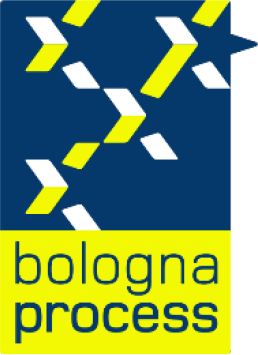Medical Imaging Techniques
Course Details

KTO KARATAY UNIVERSITY
Vocational School of Medical Services
Programme of Medical Imaging Techniques
Course Details
Vocational School of Medical Services
Programme of Medical Imaging Techniques
Course Details

| Course Code | Course Name | Year | Period | Semester | T+A+L | Credit | ECTS |
|---|---|---|---|---|---|---|---|
| 99400003 | Occupational Health and Safety | 1 | Autumn | 1 | 2+0+0 | 2 | 2 |
| Course Type | Compulsory |
| Course Cycle | Associate (Short Cycle) (TQF-HE: Level 5 / QF-EHEA: Short Cycle / EQF-LLL: Level 5) |
| Course Language | Turkish |
| Methods and Techniques | - |
| Mode of Delivery | Face to Face |
| Prerequisites | - |
| Coordinator | - |
| Instructor(s) | Prof. Murat DARÇIN |
| Instructor Assistant(s) | - |
Course Instructor(s)
| Name and Surname | Room | E-Mail Address | Internal | Meeting Hours |
|---|---|---|---|---|
| Prof. Murat DARÇIN | A-306 | [email protected] | 7906 |
Course Content
İş Sağlığı ve Güvenliğine Giriş, Firmalarda İş Sağlığı ve Güvenliği Kurulları, Organizasyon Yapısı ve Görevler, Tehlikelerin Tanımlanması, Risk Yönetimi ve Değerlendirilmesi, Acil Durum Planları, Endüstride Çalışma Ortamlarında İş Güvenliği Analizleri, İş Kazalarından Korunma Politikaları, Koruyucu Donanımlar, İkaz İşaretleri, Koruyucu Tedbirler
Objectives of the Course
To inform the students about the safety issues in the field of engineering, to introduce the security problems encountered during the activities in the field of engineering and to provide solutions to them and to inform them about the security related legislation.
Contribution of the Course to Field Teaching
| Basic Vocational Courses | |
| Specialization / Field Courses | |
| Support Courses | X |
| Transferable Skills Courses | |
| Humanities, Communication and Management Skills Courses |
Relationships between Course Learning Outcomes and Program Outcomes
| Relationship Levels | ||||
| Lowest | Low | Medium | High | Highest |
| 1 | 2 | 3 | 4 | 5 |
| # | Program Learning Outcomes | Level |
|---|---|---|
| P2 | Has knowledge of general medical terms, first aid issues related to anatomical and physiological issues related to the field of health, and uses applied knowledge. | 4 |
| P | 3 |
Course Learning Outcomes
| Upon the successful completion of this course, students will be able to: | |||
|---|---|---|---|
| No | Learning Outcomes | Outcome Relationship | Measurement Method ** |
| O1 | To be able to explain the concept of occupational health and safety as a whole. | P.9.1 | 1 |
| O2 | Being able to understand the interactions between work and human health. | P.9.2 | 1 |
| O3 | Ability to define workplace environment factors in work and health relations. | P.9.3 | 1 |
| O4 | Knowing what work-related diseases are, how they occur and their effects. | P.9.4 | 1 |
| O5 | Ability to explain work-related diseases and the measures to be taken to prevent occupational diseases. | P.9.5 | 1 |
| O6 | Ability to identify and analyze risk factors in work environments and explain the precautions to be taken. | P.9.6 | 1 |
| O7 | Ability to understand accident formation theories and explain risk assessment standards. | P.9.7 | 1 |
| O8 | Knowing the legislation and legal responsibilities regarding occupational health and safety. | P.9.8 | 1 |
| ** Written Exam: 1, Oral Exam: 2, Homework: 3, Lab./Exam: 4, Seminar/Presentation: 5, Term Paper: 6, Application: 7 | |||
Weekly Detailed Course Contents
| Week | Topics |
|---|---|
| 1 | Definition and history of occupational safety |
| 2 | Duties of state, employer and worker, concept and types of law |
| 3 | The concept of work accident, causes of work accidents and types of work accidents |
| 4 | The concept of occupational diseases, types and ways of prevention |
| 5 | Ergonomics (The effect of worker and workplace conditions on worker health) |
| 6 | Work safety in work areas with non-electric appliances |
| 7 | Work safety in work in electrical work areas |
| 8 | Safety in Work Safety (Machine and Personal Protection) |
| 9 | Safety rules for maintenance and repair work |
| 10 | Code of ethics in working life |
| 11 | Safety in lifting and transportation vehicles |
| 12 | Safety measures in fire, explosion and natural disasters |
| 13 | First aid and first aid rules |
| 14 | Health and Safety Signs |
Textbook or Material
| Resources | Altınel, H. (2015). İşçi Sağlığı ve İş Güvenliği, Detay Yayıncılık |
Evaluation Method and Passing Criteria
| In-Term Studies | Quantity | Percentage |
|---|---|---|
| Attendance | - | - |
| Laboratory | - | - |
| Practice | - | - |
| Field Study | - | - |
| Course Specific Internship (If Any) | - | - |
| Homework | - | - |
| Presentation | - | - |
| Projects | - | - |
| Seminar | - | - |
| Quiz | - | - |
| Listening | - | - |
| Midterms | 1 | 30 (%) |
| Final Exam | 1 | 70 (%) |
| Total | 100 (%) | |
ECTS / Working Load Table
| Quantity | Duration | Total Work Load | |
|---|---|---|---|
| Course Week Number and Time | 14 | 2 | 28 |
| Out-of-Class Study Time (Pre-study, Library, Reinforcement) | 0 | 0 | 0 |
| Midterms | 1 | 20 | 20 |
| Quiz | 0 | 0 | 0 |
| Homework | 0 | 0 | 0 |
| Practice | 0 | 0 | 0 |
| Laboratory | 0 | 0 | 0 |
| Project | 0 | 0 | 0 |
| Workshop | 0 | 0 | 0 |
| Presentation/Seminar Preparation | 0 | 0 | 0 |
| Fieldwork | 0 | 0 | 0 |
| Final Exam | 1 | 20 | 20 |
| Other | 0 | 0 | 0 |
| Total Work Load: | 68 | ||
| Total Work Load / 30 | 2,27 | ||
| Course ECTS Credits: | 2 | ||
Course - Learning Outcomes Matrix
| Relationship Levels | ||||
| Lowest | Low | Medium | High | Highest |
| 1 | 2 | 3 | 4 | 5 |
| # | Learning Outcomes | P9 |
|---|---|---|
| O1 | To be able to explain the concept of occupational health and safety as a whole. | 5 |
| O2 | Being able to understand the interactions between work and human health. | 4 |
| O3 | Ability to define workplace environment factors in work and health relations. | 5 |
| O4 | Knowing what work-related diseases are, how they occur and their effects. | 5 |
| O5 | Ability to explain work-related diseases and the measures to be taken to prevent occupational diseases. | 5 |
| O6 | Ability to identify and analyze risk factors in work environments and explain the precautions to be taken. | 5 |
| O7 | Ability to understand accident formation theories and explain risk assessment standards. | 5 |
| O8 | Knowing the legislation and legal responsibilities regarding occupational health and safety. | 5 |
